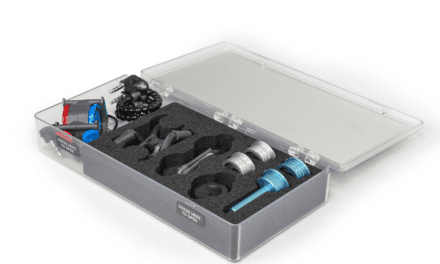Plural Publishing announced the release of Auditory Brainstem Evoked Potentials: Clinical and Research Applications, a book that “provides a solid foundation of the theoretical principles of auditory evoked potentials.” This understanding is important for both the development of optimal clinical test strategies, and interpretation of test results, according to Plural. Developed for graduate-level audiology students, this comprehensive text aims to build a fundamental understanding of auditory evoked brainstem responses (ABR), and their relationship to normal and impaired auditory function, as well as its various audiologic and neuro-otologic applications.
In addition to covering the classical onset ABR, the book provides a thorough review of sustained brainstem responses elicited by complex sounds, including auditory steady state response (ASSR), envelope following response (EFR), and frequency-following response (FFR), and the growing clinical and research applications of these responses. By exploring why certain stimulus manipulations are required to answer specific clinical questions, the author provides the resources needed for students and clinicians to make reasoned decisions about the optimal protocol to use in a given situation.
Key Features
- A full chapter devoted to laboratory exercises,
- Numerous illustrations to help explain key concepts,
- Description of neural bases underlying amplitude and latency changes,
- Troubleshooting techniques,
- End-of-chapter summaries,
- A PluralPlus companion website with PowerPoint lecture slides for instructors and case studies for students.
Book Details
Title: Auditory Brainstem Evoked Potentials: Clinical and Research Applications | Author: Ananthanarayan (Ravi) Krishnan | Published: 10/12/21 | ISBN: 978-1-63550-239-8 | https://www.pluralpublishing.com/publications/auditory-brainstem-evoked-responses-clinical-and-research-applications
About The Author
Ananthanarayan (Ravi) Krishnan, PhD, CCC-A, is currently a professor in audiology/hearing science in the Department of Speech, Language, and Hearing Sciences at Purdue University. Prior to his current position, he was an associate professor in audiology/hearing science in the Department of Audiology and Speech Sciences at the University of Tennessee. He did his undergraduate work at the All India Institute of Speech and Hearing (University of Mysore), his graduate work in audiology (master’s) at the University of Memphis, and his doctoral work in auditory neuroscience at the University of Texas at Dallas. His research uses brainstem and cortical electrophysiological measures to evaluate neural representation of complex sounds in normal and impaired ears. The focus of his current research is on the processing of pitch-relevant information at the brainstem and cortical levels and how this processing is shaped by experience.
Source: Plural Publishing
Image: Plural Publishing






